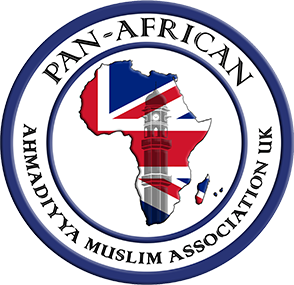HISTORY OF PAAMA
The Pan-African Ahmadiyya Muslim Association (PAAMA) UK, was established in 1986 under the instructions of Hadhrat Mirza Tahir Ahmad, Khalifatul Masih IV (may Allah’s have mercy on him). Huzur himself suggested the name Pan-African Ahmadiyya Muslim Association and appointed HE Alhaj IBK Addo as the President.
The aim and objective of the association, which comprise all Ahmadis of African origin resident in the United Kingdom, is to facilitate and oversee the educational, financial, moral and social welfare of its members. Secondly, it was to search and reactivate or bring back into the fold of Ahmadiyyat, those Ahmadis who have become inactive or lost their attachment to the Jama’at following their migration to the UK. Another purpose for the formation of PAAMA was to propagate the message of Islam and Ahmadiyyat generally as well as to create a platform where African Ahmadis could engage and exchange ideas with the political and intellectual elite of the African diaspora who have settled in the UK, with the view of finding a common ground to enlighten the people of Africa in religious and secular matters.
Following the retirement of H.E. Alhaj IBK Addo in 2009, the leadership in PAAMA has been by election subject to approval by Huzur Aqdas. Mr Issah Ahmed Wemah was appointed as new President by Huzur Aqdas after the elections, a position he held until the last elections in April 2014 guiding the association through many achievements most notably the ‘Africa at 50’ Independence Day celebrations.
Under the instructions of Khalifatul Masih (aba) PAAMA elections were held on 19th April 2014 and with it began a new era. Huzur Aqdas approved Mr Tommy Kallon as the new President.Just after a few days of commencing office Mr Tommy Kallon held a general meeting with the membership of PAAMA where he set out his vision for PAAMA.
He has put structures in place to help him achieve his goals. With Huzur’s approval he has reviewed the organisational structure of PAAMA replacing the lingual and regional subcommittees with regional branches each having a Regional President and Regional Executive. The National Executive has also been extended to include two Vice Chairmen; Taleem and Tarbiyyat are now two separate departments in addition to newly created Internal Affairs, External Affair and an Isha’at departments. The PAAMA Lajna are now represented by a Head of Lajna, a Lajna Central Executive and Regional Heads.
